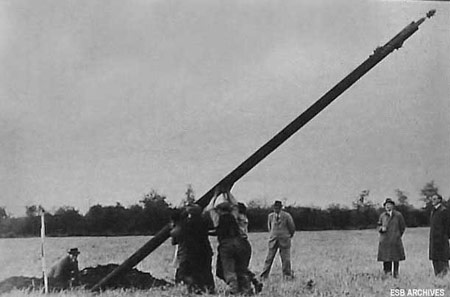
The Irish government has recently announced its intention to privatise the nations broadband infrastructure, meaning that the millions of tax payers money invested in the roll out of broadband nation wide will not be recuperated instead private companies will be giving a free hand to profiteer off the states investment. It also raises the prospect of price gouging by private companies as has been the case with bin charges. This announcement confirms that the current governments plan for rural broadband ignores the lessons of the rural electrification scheme.
After the second world war the Irish government set itself to the task of rural electrification, which saw the majority of rural Ireland connected to the national grid for the first time throughout the 1940s, 50s and 60s. The rural electrification program has been one of the most significant events in the history of rural Ireland, its successful completion required significant state support and the political will to undertake such an expensive long term project.
Electrification schemes had of course been steadily expanding the national grid since the Shannon scheme in the 1920s. The scale of rural electrification was however unprecedented, 1 million poles and 750,000 km of wire were erected in twenty years providing electricity to nearly 300,00 homes, as well as providing a significant employment boost to rural communities.

Considering the economic and social benefits of rural electrification it would be reasonable to assume that contemporary Irish governments would be anxious to ensure that the technology available to communities in rural Ireland never again falls so far behind that of urban Ireland. Such an assumption would however be mistaken Rural broadband has been an issue since the early noughties, and rural communities have had to endure the failure of successive governments to address the issue. The lack of high-speed broadband, or any coverage in some rural areas, is much more then a trivial example of a technological divide between urban and rural. It has severely reduced the viability of businesses in rural communities, further compounding the economic decline in rural areas.
The National Broadband Plan (NBP), the latest attempt at creating a framework for the roll out of rural broadband follows on foot of previous schemes including the Rural Broadband Scheme and National Broadband Scheme, and aims to roll out high speed broadband nationwide. The government has however refused to ensure that vital public infrastructure such as the broadband network be kept in state control, instead through the privatisation of the scheme the government is allowing private companies to profit from public investment. Whereas the creation of the national grid and rural electrification involved extensive state support through the creation and funding of the ESB, successive government has taken a much more hands off approach with the provision of rural broadband, this hands off approach is now set to culminate in privatisation. The result of this lack of support has seen the neglect of areas not deemed profitable enough for private operators, what will happen to these areas after privatisation? Private companies will not ensure that broadband is accessible and affordable for all, only a state funded network can safeguard the provision of broadband to unprofitable regions.
This reliance on private suppliers will mean that those rural areas most in need of the economic benefits of high speed broadband have been ignored. Adequate broadband coverage is needed if rural communities are to survive and thrive, it is unacceptable for the state to allow rural communities to be effectively shut out of the modern economy. If rural communities are to have a future than broadband is essential, without it the development of different industries from tourism to agri-food will be fatally impeded.
Speaking in the Dáil debate on rural electrification James Larkin Jr spoke of the educational and cultural benefits of the scheme, similarly broadband is necessary if the quality of life in rural communities is to be kept inline with urban Ireland. The lack of broadband coverage means that children in rural areas, many of which are officially recognised as disadvantaged areas under the DEIS system are at a distinct disadvantage to children in urban areas in terms of access to educational material online. The effects of this are most clear on children in second level education as much of the exam papers for junior and leaving cert as well as various study aides are available online, for those living in rural areas and in third level education the situation is further compounded by the fact that almost all aspects of third level education including registering for courses,applying for grants, accessing notes, and even doing exams in some cases are done online.
The need for rural broadband is not a recent development that has caught the government offside, rather it is the result of the complacency of successive governments that have failed rural communities. A failure which needs to be addressed with the utmost urgency if we are to narrow the emerging rural urban divide.

One thought on “Broadband the new electricity”